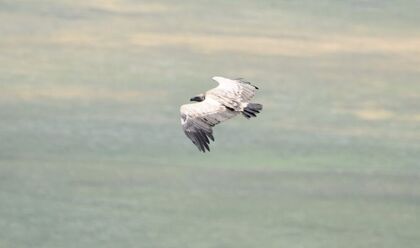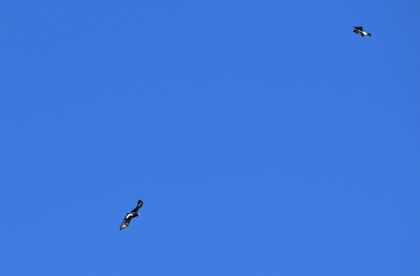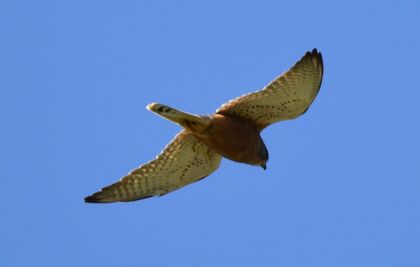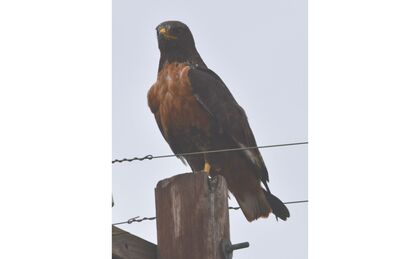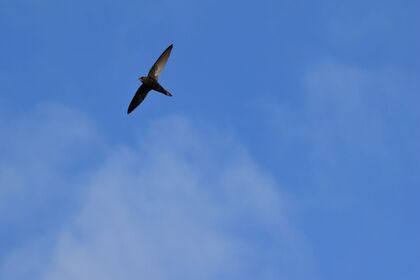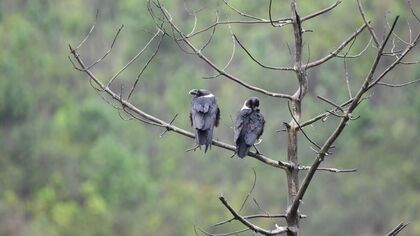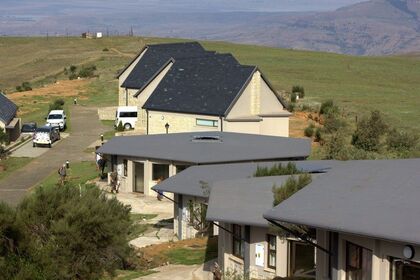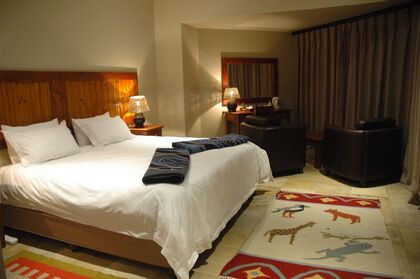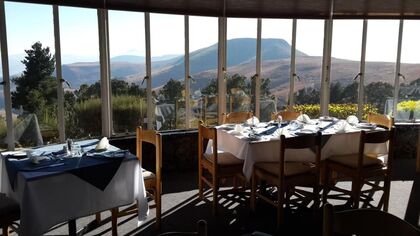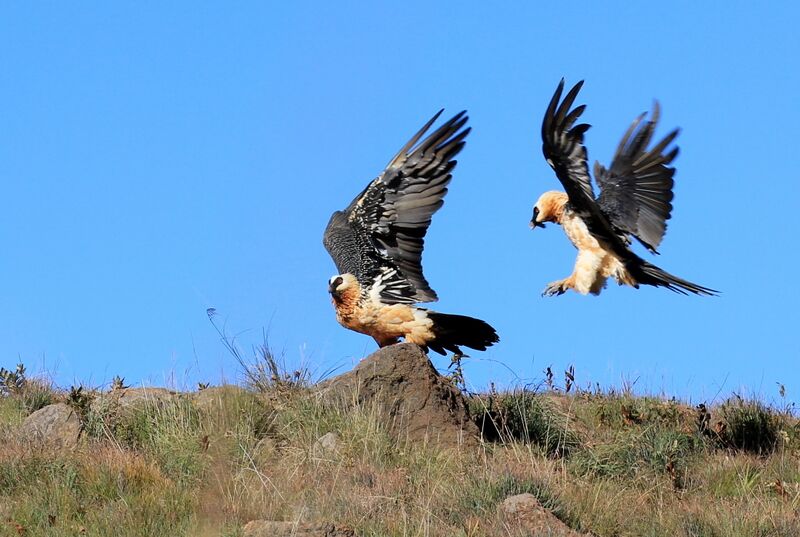
Birding in the Drakensberg - Witsieshoek
After driving up the steep mountain road from Phuthaditjhaba, winding under natural Basalt cliff overhangs - seemingly to nowhere - you eventually find yourself parking at reception 2200 meters above sea level with the nearest signs of life kilometers down the mountain.
The untouched isolation within natural mountain grasslands and breathtaking views provide a stark juxtaposition with the creature comforts of a well run resort. Witsieshoek is a truly magical place - and we haven’t even begun to talk about the birds!
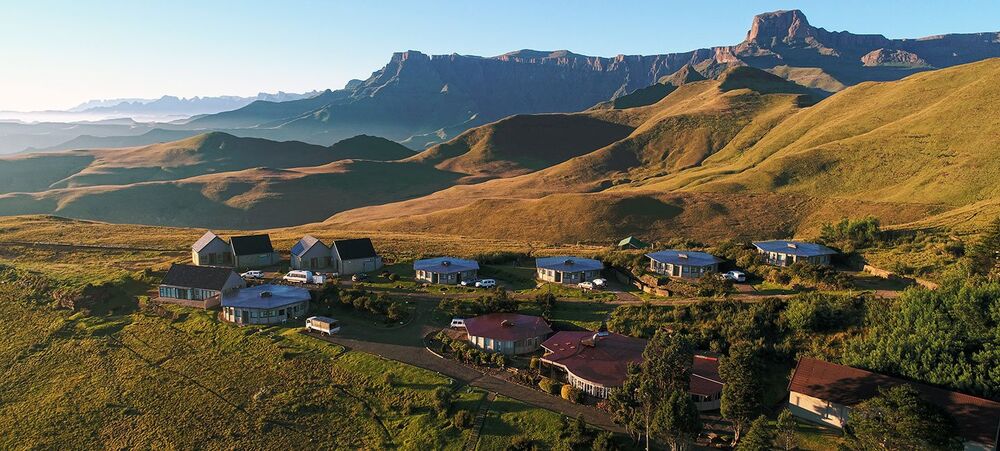
Witsieshoek Lodge
We arrived at the famous mountain road up to the Sentinel (and Witsieshoek) as the sun was setting. There is a small toll gate at the bottom of the hill which serves as a symbolic marker to the Uklahamba Drakensberg conservation area. We were immediately greeted by a group of Southern Bald Ibis scrounging amongst the boulder strewn grasslands. The Bald Ibis is endangered and lives along cliff faces near grasslands - a warm welcome to the area.
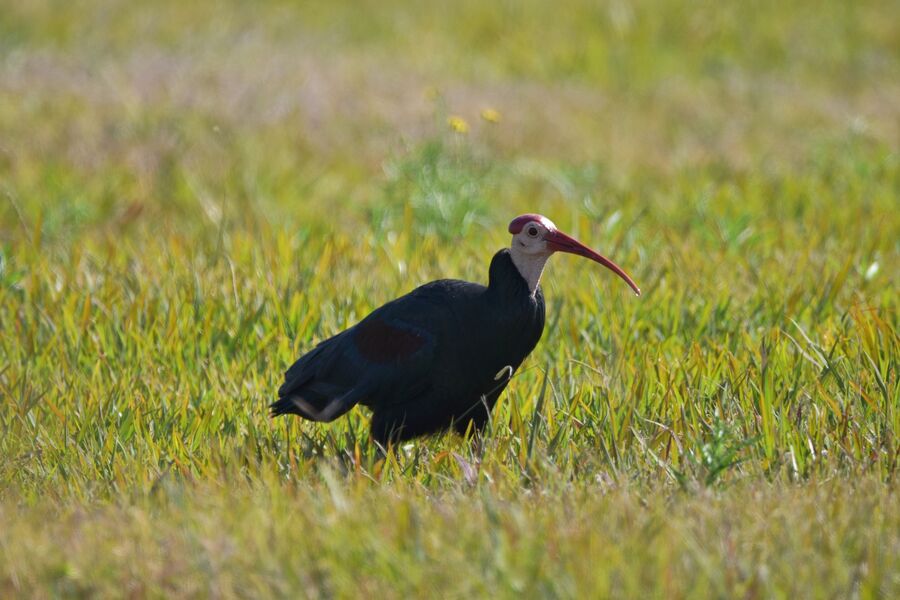
Southern Bald Ibis
After winding up the road, we got to Witsieshoek as the sky darkened. Owls and Nightjars are not expected in areas like this, and other than the occasional clucking of some Helmeted Guineafowl from down the dark mountainside, the silence is almost deafening - a welcome respite from the noisy hustle-bustle of the city we left behind for the weekend. We go to bed excited for the view that inevitably awaits us in the morning. It does not disappoint.
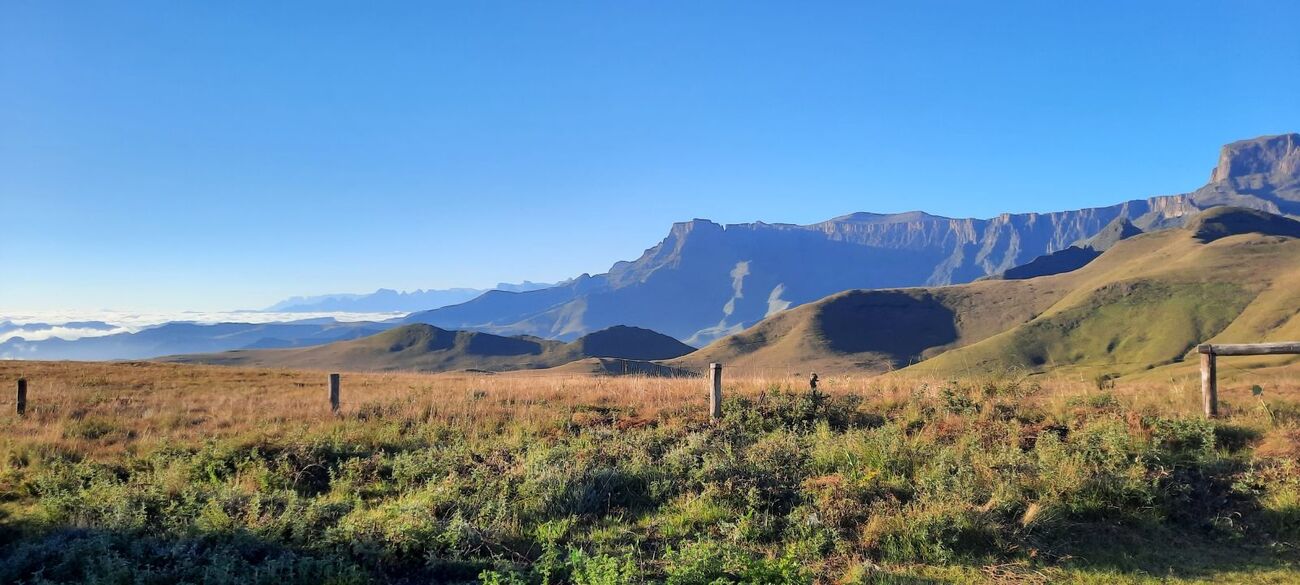
The morning view from Witsieshoek. A spectacular panorama of the Sentinel (right), the Ampitheater escarpment, with the clouds far below in the distance!
The Bearded Vulture
There are very few places that offer the unique birding opportunities of Witsieshoek. We would be remiss to not immediately mention the iconic Bearded Vulture, featured even on the logo of Witsieshoek.
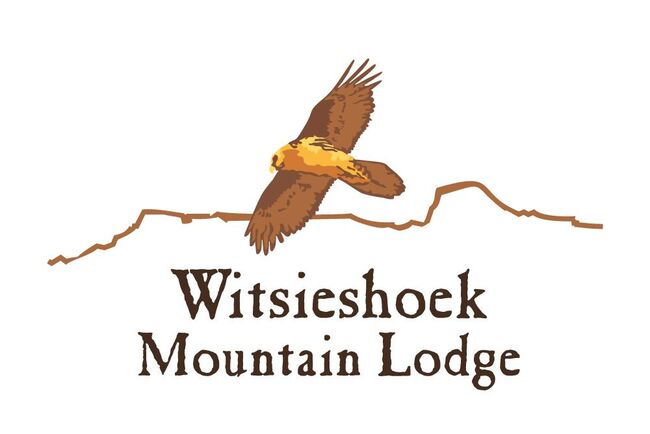
The Witsieshoek logo features the bird of the area - the Bearded Vulture
This Bearded Vulture is one of the most beautiful and elegant of the vultures - worldwide. Unmistakable with its atypical bright orange feathered neck and black facial feathers and 'beard', you can catch it floating and swooping in the skies from the Witsieshoek parking lot.
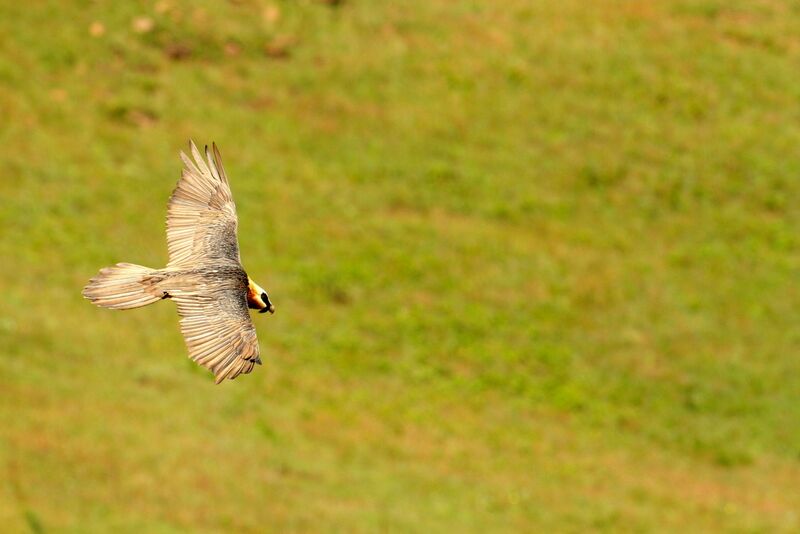
Bearded Vulture in Flight
All vultures in South Africa are endangered, and unfortunately the Bearded Vulture is worst off. It only lives amongst the extreme high altitudes of the Drakensberg escarpment and optimistic estimates approximate only 200 adults remaining - catching some flying overhead is one of the main birding draws of the Witsieshoek region.
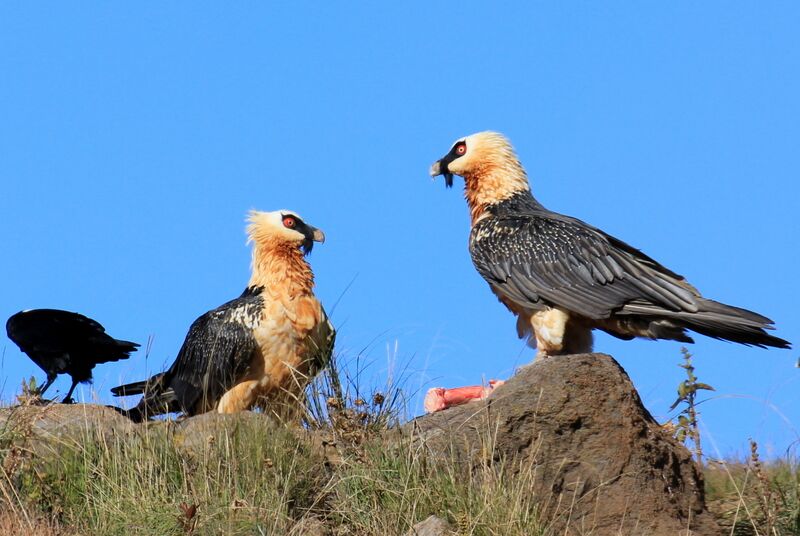
Bearded Vultures grabbing a morning meal at the Witsieshoek Vulture Restaurant
The High Flyers
The high rock cliff faces in the Witsieshoek area provide excellent roosting sites for various cliff nesters. The Southern Bald Ibis and Bearded Vulture already mentioned are typical candidates but other raptors include the Verreaux’s Eagle, Jackal Buzzard, Cape Vulture and Rock Kestrel - all can be easily seen floating around the skies, hunting for mountain snacks.
Other high flyers that can be found are the African Black Swift - identifiable by being a completely black swift swooping restlessly - and the locally common White-Necked Raven - which is South Africa’s only local Raven and resident near Witsieshoek.
High-Altitude Grassland Specials
Witsieshoek is surrounded by vulnerable high-altitude grasslands which offer a unique set of birdlife. Aweb of hiking trails winds through these grasslands where a wide variety of birds can be seen by a patien t birder. We recommend taking a short, slow walk to Mahai Falls - keeping your eyes and ears open. Grassland birds can be notoriously hard to locate - but some birds to look out for are the Cape Grassbird, Lazy Cisticola, Malachite Sunbird and Ground Woodpecker.
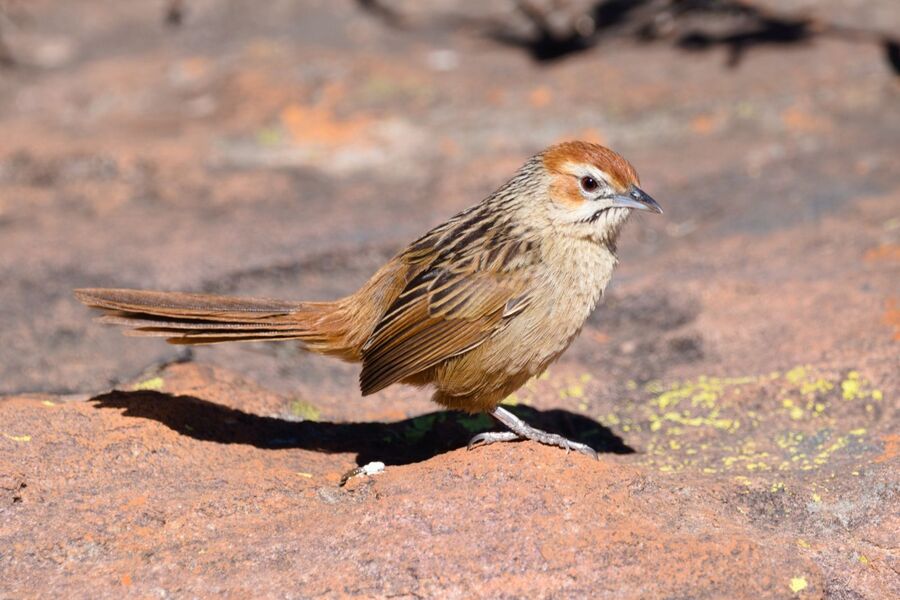
Cape Grassbird
Drakensberg Specials
The unique birdlife in the Drakensberg is made evident by the species with ‘Drakensberg’ in their name. These include the Drakensberg Prinia, Drakensberg Rockjumper and Drakensberg Siskin.
The Drakensberg Prinia is most easily located around the Witsieshoek paths, where it makes itself evident through its repetitive "TSIP-TSIP-TSIP-TSIP-...." call.
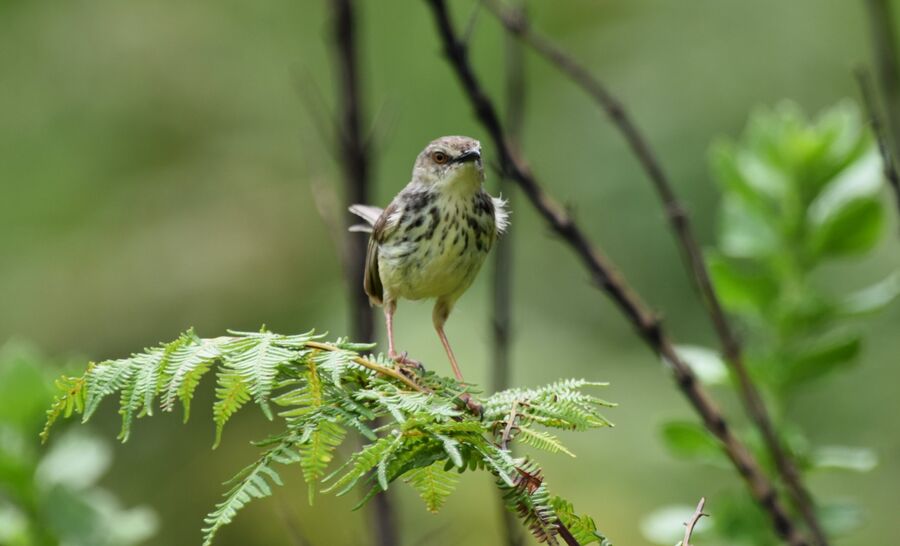
Drakensberg Prinia
The Drakensberg Rockjumper is a classic bird of the area and only lives at very high altitudes. They can be seen around the camp, but your best chance to see it would involve heading up the road to the Sentinel Car Park. This car park is situated at 2600m above sea level, and is known as the gateway to the high Drakensberg escarpment, and we highly recommend making a day of it by starting a hike up the famous chain-ladder hike to the top of the ampitheatre.
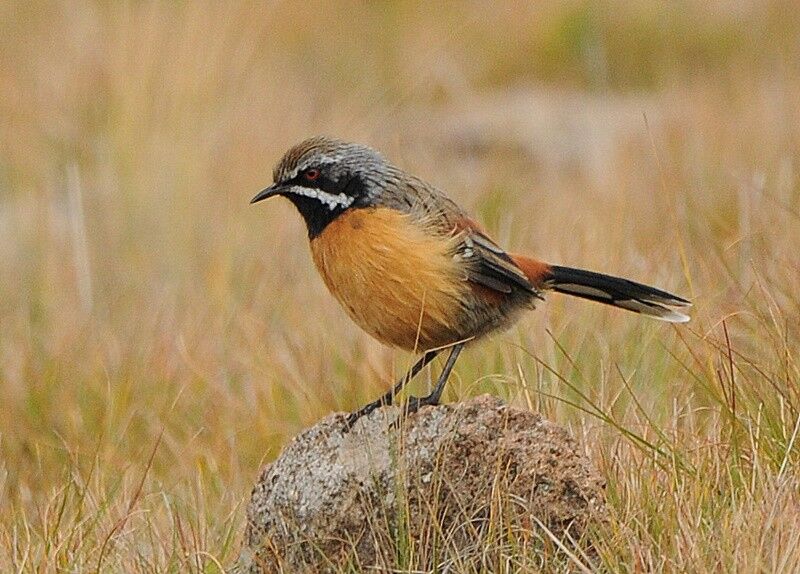
Drakensberg Rockjumper - Photo Credit: Tadeusz Stawarczyk
The Drakensberg Siskin is the most difficult of the trio to find, as it is limited to only the highest of altitudes (3000m+). If you want to give yourself the best odds of finding it, you will need to head up the aforementioned chain ladder to the top of the escarpment where you will look for a small yellow weaver-like bird with distinctive white tips to the tail feathers.
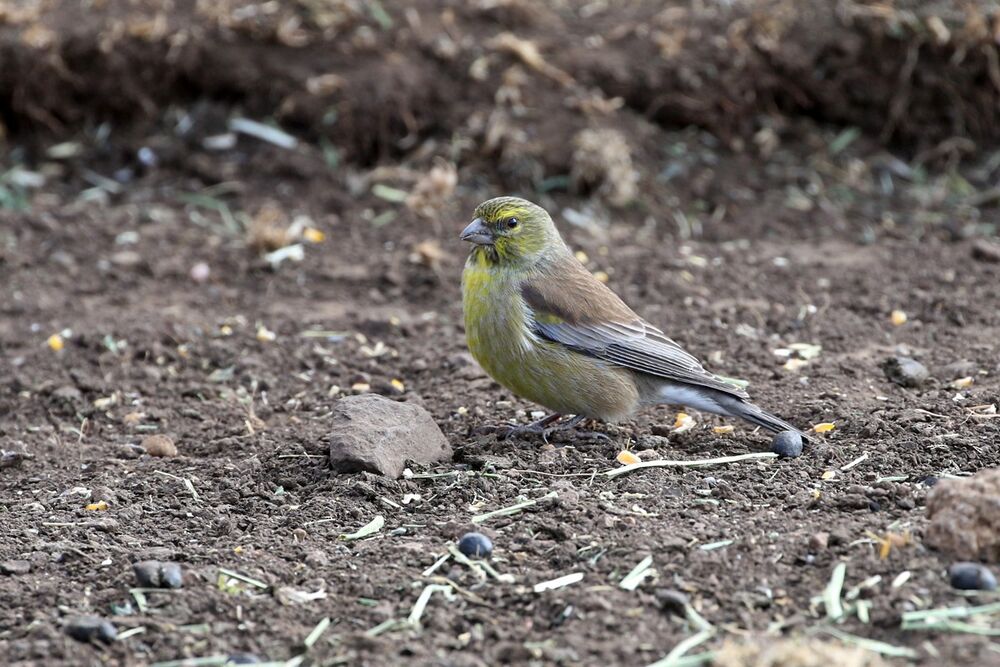
Drakensberg Siskin - Photo Credit: Charley Hesse
Note that the road to the sentinel car park is strictly a 4x4 road, but can be walked as a half-day hike - or you can get a 4x4 transfer up to the car park from Witsieshoek.
Witsieshoek Lodge
Witsieshoek Lodge is run by the local Sotho Batlokoa Community - a culture that prides itself on being hospitable and welcoming to guests. This culture shows with the way the lodge is run. The staff is all warm and friendly and makes your stay personal.
The rooms and servicing are also top-notch with everything perfectly maintained and cleaned everyday, while the restaurant has hired some top-quality chefs to provide a varied, well-priced menu that offers full breakfasts, daily lunches and 3-course dinners.
Hiking at Witsieshoek
The close proximity of Witsieshoek to the Sentinel Car Park means it is mainly viewed as a hiking destination. This view is absolutely warranted and one can spend many days exploring the network of streams, trails, waterfalls and cliffs all accessible as part of a single-day hike from Witsieshoek.
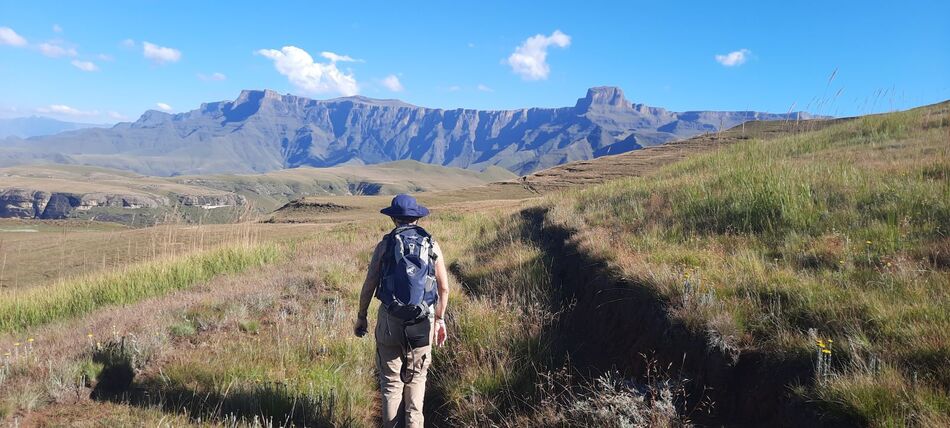
Hiking at Witsieshoek
Our favourite day hike is the Mahai Falls/Forest loop - returning up the crack. If you take a break and grab a snack in the Mahai Forest, you can find a set of Afromontane forest birds, different to the rest of Witsieshoek - including the Cape Batis, Chorister Robin-Chat or Bush Blackcap (if you are lucky!). Note that going up the crack is STEEP and includes a short section of chain ladder.
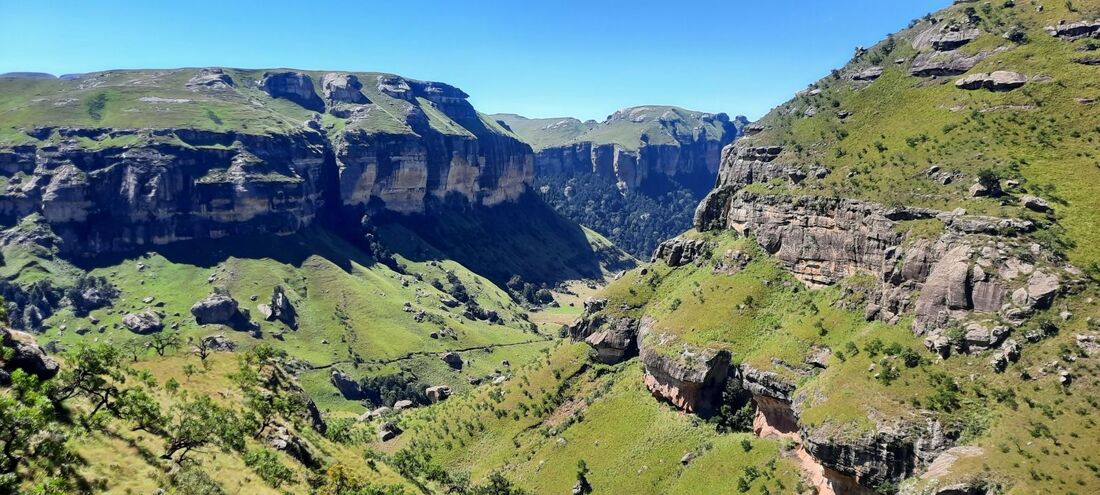
Drakensberg
Alternatively, the hike to Gudu Falls is a mostly gentle hike that winds through the rocky grasslands and includes a spectacular stop-over spot at the Falls. But if you want to make it to the highest possible point, take a drive or transfer to the Sentinel parking lot and do the famous Chain-Ladder hike.
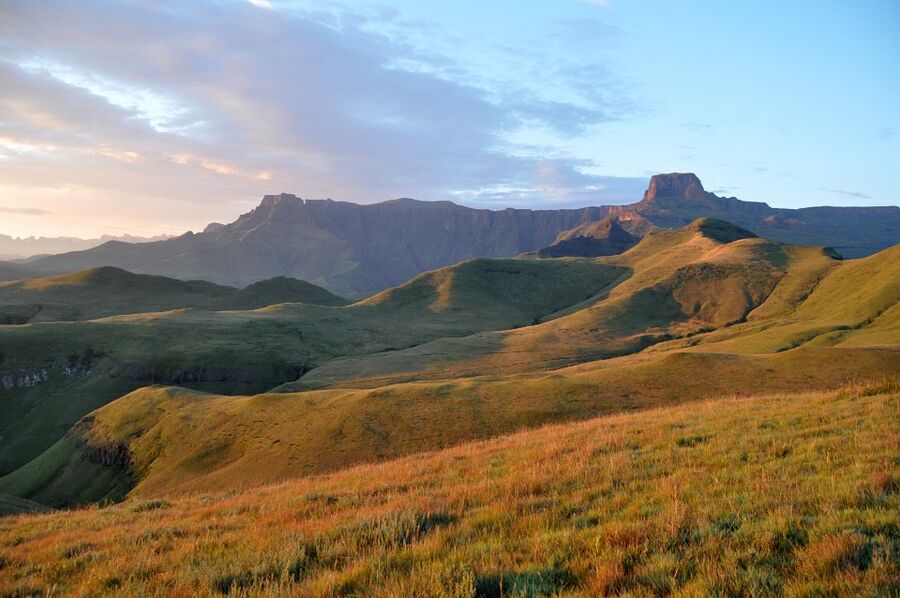
The Beautiful Drakensberg
For the more adventurous, overnight hikes are regularly started at the Sentinel Car Park - close to the resort. This is not for the faint-hearted as hikers need to carry their tent, bedding, food and gear up a steep mountain path and chain ladder. Read more about the Witsieshoek hikes at their website.
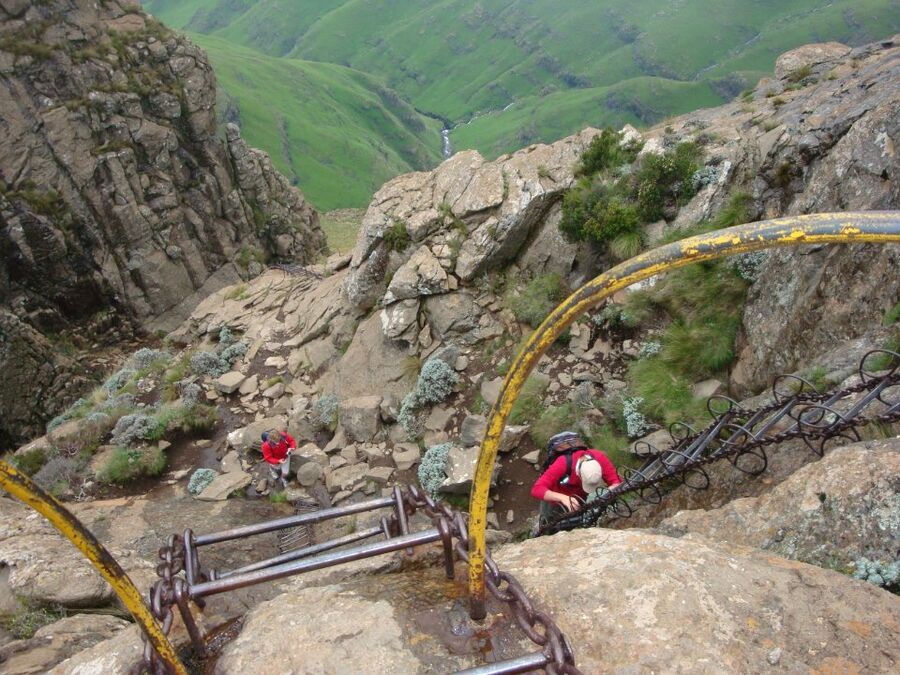
The famous Chain-Ladder
Bird List
I would be happy to go to Witsieshoek even if I saw no birds. But “no birds” couldn't be further from the truth. There may not be the rich bushveld varieties found in birding hotspots like the Kruger, or Zululand area - but the birds you do find here are unique specials that cannot be found anywhere else. An easy drive from anywhere in Gauteng, Kwazulu-Natal or the Free State - Witsieshoek is an absolute must for anyone looking to get away from the day-to-day grind of the modern world and escape to the Land of the Lammergeier (Old name for Bearded Vulture!).
Take along our bird list to keep track of what you can find... How many can you tick off?

- Witsieshoek Bird List
- Raptors
- Buzzard, Common
- Buzzard, Jackal
- Eagle, African Fish
- Eagle, Verreaux's
- Falcon, Amur
- Falcon, Lanner
- Falcon, Peregrine
- Harrier, Black
- Harrier-Hawk, African
- Kestrel, Rock
- Kite, Black-winged
- Kite, Yellow-billed
- Sparrowhawk, Rufous-breasted
- Vulture, Bearded
- Vulture, Cape
- Local Specials
- Bunting, Cape
- Canary, Cape
- Chat, Buff-streaked
- Chat, Familiar
- Chat, Sickle-winged
- Cisticola, Lazy
- Cisticola, Wailing
- Cisticola, Wing-snapping
- Courser, Temminck's
- Crow, Cape
- Francolin, Grey-winged
- Francolin, Red-winged
- Grassbird, Cape
- Ibis, Southern Bald
- Kestrel, Lesser
- Korhaan, Blue
- Longclaw, Cape
- Martin, Common House
- Martin, Rock
- Pipit, African Rock
- Pipit, Mountain
- Pipit, Nicholson's
- Pipit, Yellow-breasted
- Prinia, Drakensberg
- Quail, Common
- Raven, White-necked
- Robin-Chat, Chorister
- Rockjumper, Drakensberg
- Secretarybird, Secretarybird
- Siskin, Drakensberg
- Starling, Red-winged
- Stork, Black
- Stork, White
- Sugarbird, Gurney's
- Sunbird, Malachite
- Swift, African Black
- Swift, Alpine
- Swift, Common
- Swift, Horus
- Thrush, Cape Rock
- Thrush, Sentinel Rock
- Woodpecker, Ground
- Our Common Friends
- Bishop, Yellow
- Bishop, Yellow-crowned
- Bokmakierie, Bokmakierie
- Boubou, Southern
- Bulbul, Dark-capped
- Bunting, Cinnamon-breasted
- Chat, Ant-eating
- Cisticola, Levaillant's
- Cuckoo, Black
- Cuckoo, Red-chested
- Dove, Laughing
- Dove, Red-eyed
- Dove, Ring-necked
- Drongo, Fork-tailed
- Egret, Western Cattle
- Fiscal, Southern
- Flycatcher, African Paradise
- Guineafowl, Helmeted
- Heron, Black-headed
- Ibis, Hadada
- Myna, Common
- Neddicky, Neddicky
- Pigeon, Speckled
- Pipit, African
- Puffback, Black-backed
- Robin-Chat, Cape
- Sparrow, Cape
- Sparrow, House
- Sparrow, Southern Grey-headed
- Spurfowl, Natal
- Starling, Pied
- Stonechat, African
- Swallow, Barn
- Swallow, Greater Striped
- Swallow, White-throated
- Swift, Little
- Swift, White-rumped
- Thrush, Olive
- Wagtail, Cape
- Weaver, Southern Masked
- Wheatear, Mountain
- White-eye, Cape
- Woodpecker, Olive
- Others
- __________________________
- __________________________
- __________________________
- __________________________
- __________________________
- __________________________
- __________________________
- __________________________
- __________________________
- __________________________
- __________________________
- __________________________
- __________________________
- __________________________
- __________________________
- __________________________
- __________________________
- __________________________
- __________________________
- __________________________
- __________________________
- __________________________
- __________________________
